Trainer aircraft, integral to the aviation industry, play a crucial role in preparing pilots for the complexities of flying. This section lists all major trainer aircrafts since the 1950s.
Trainers
-
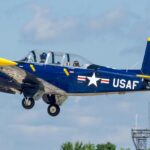 1953 - Beechcraft T-34 Mentor
1953 - Beechcraft T-34 Mentor
-
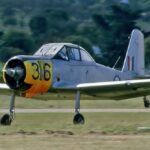 1955 - CAC Winjeel
1955 - CAC Winjeel
-
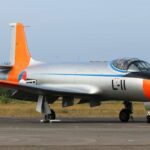 1955 - Fokker S.14 Machtrainer
1955 - Fokker S.14 Machtrainer
-
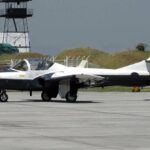 1957 - Cessna T-37 Tweet
1957 - Cessna T-37 Tweet
-
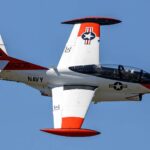 1959 - North American / Boeing T-2 Buckeye
1959 - North American / Boeing T-2 Buckeye
-
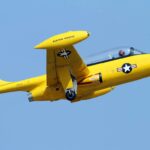 1959 - TEMCO TT-1 Pinto
1959 - TEMCO TT-1 Pinto
-
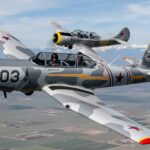 1960 - Nanchang CJ-6
1960 - Nanchang CJ-6
-
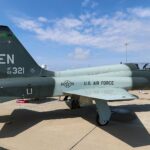 1961 - Northrop T-38 Talon
1961 - Northrop T-38 Talon
-
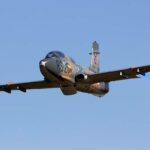 1962 - Aermacchi MB.326
1962 - Aermacchi MB.326
-
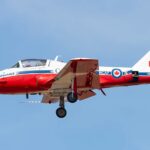 1963 - Canadair CT-114 Tutor
1963 - Canadair CT-114 Tutor
-
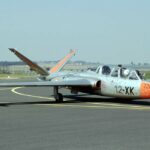 1963 - Potez CM.173 Super Magister
1963 - Potez CM.173 Super Magister
-
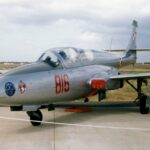 1964 - PZL TS-11 Iskra
1964 - PZL TS-11 Iskra
-
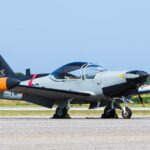 1966 - Leonardo (SIAI-Marchetti) SF.260
1966 - Leonardo (SIAI-Marchetti) SF.260
-
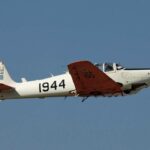 1966 - Neiva T-25 Universal
1966 - Neiva T-25 Universal
-
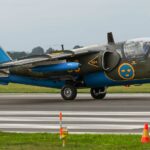 1967 - Saab 105
1967 - Saab 105
-
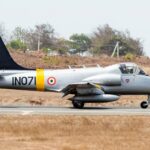 1968 - HAL HJT-16 Kiran (Ray of Light)
1968 - HAL HJT-16 Kiran (Ray of Light)
-
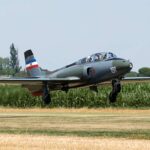 1968 - SOKO G-2 Galeb (Seagull)
1968 - SOKO G-2 Galeb (Seagull)
-
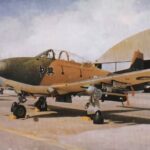 1974 - AIDC T-CH-1 (Chung-Hsing)
1974 - AIDC T-CH-1 (Chung-Hsing)
-
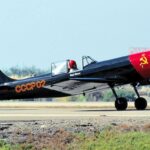 1975 - Yakovlev Yak-50
1975 - Yakovlev Yak-50
-
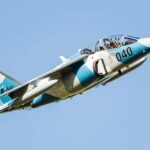 1978 - Dassault-Dornier Alpha Jet
1978 - Dassault-Dornier Alpha Jet
-
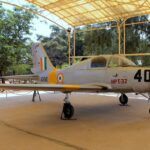 1978 - HAL HPT-32 Deepak
1978 - HAL HPT-32 Deepak
-
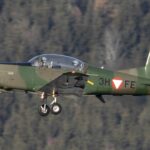 1978 - Pilatus PC-7
1978 - Pilatus PC-7
-
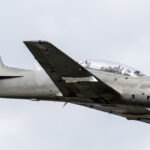 1983 - Embraer EMB-312 Tucano
1983 - Embraer EMB-312 Tucano
-
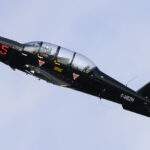 1983 - SOCATA TB-30 Epsilon
1983 - SOCATA TB-30 Epsilon
-
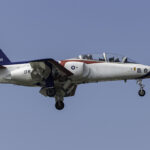 1984 - AIDC AT-3 Tz-Chiang
1984 - AIDC AT-3 Tz-Chiang
-
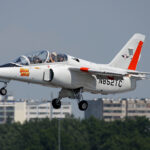 1984 - Alenia Aermacchi S-211
1984 - Alenia Aermacchi S-211
-
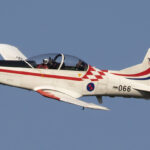 1984 - Pilatus PC-9
1984 - Pilatus PC-9
-
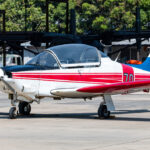 1985 - ENAER T-35 Pillán (Volcano)
1985 - ENAER T-35 Pillán (Volcano)
-
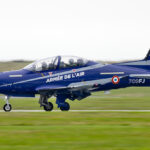 1987 - Pilatus PC-21
1987 - Pilatus PC-21
-
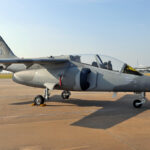 1988 - FMA IA-63 Pampa (Prairie)
1988 - FMA IA-63 Pampa (Prairie)
-
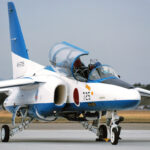 1988 - Kawasaki T-4
1988 - Kawasaki T-4
-
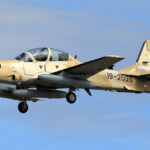 1989 - Short Tucano
1989 - Short Tucano
-
 1990 - Pilatus PC-7
1990 - Pilatus PC-7
-
 1991 - Pilatus PC-9
1991 - Pilatus PC-9
-
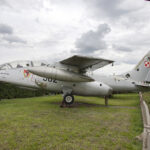 1992 - PZL I-22 Iryda
1992 - PZL I-22 Iryda
-
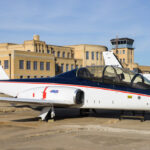 1993 - Cessna 526
1993 - Cessna 526
-
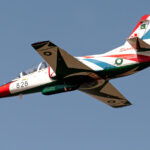 1994 - Hongdu JL-8
1994 - Hongdu JL-8
-
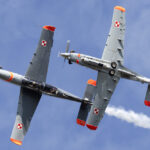 1994 - PZL-130 (Orlik)
1994 - PZL-130 (Orlik)
Trainer aircrafts, integral to the aviation industry, play a crucial role in preparing pilots for the complexities of flying. Since the dawn of aviation, these aircraft have been essential in ensuring that pilots acquire the necessary skills and experience in a controlled, forgiving environment before progressing to more advanced or specialized aircraft.
The Importance of Trainer Aircrafts
Trainer aircraft are designed with stability, simplicity, and ease of control in mind. Their primary purpose is to provide a safe learning environment for novice pilots. This includes introducing trainees to the fundamentals of flight, basic maneuvers, emergency procedures, and, in more advanced trainers, the intricacies of operating high-speed jet aircraft. Their forgiving nature allows new pilots to make mistakes without dire consequences, thus building confidence and proficiency.
Evolution of Trainer Aircraft
Early Years (1900s-1930s)
The history of trainer aircraft parallels the evolution of aviation itself. In the early 1900s, rudimentary biplanes, such as the Bleriot XI and the Curtiss Model D, were among the first used for training purposes. These aircraft were basic, with minimal controls and instrumentation, reflecting the nascent state of aviation technology.
World War II Era (1930s-1940s)
World War II saw a significant advancement in trainer aircraft. The demand for trained pilots led to the development of more sophisticated trainers. Notable examples include the North American T-6 Texan, known for its versatility and reliability, and the British de Havilland Tiger Moth, which offered an excellent introduction to flying for many RAF pilots.
Jet Age (1950s-1980s)
The advent of jet propulsion revolutionized trainer aircraft. Trainers like the Lockheed T-33 Shooting Star and the British BAC Jet Provost were developed to bridge the gap between propeller-driven trainers and high-speed jet fighters. These aircraft introduced pilots to the characteristics of jet flight, including higher speeds and more complex systems management.
Modern Era (1990s-Present)
Modern trainer aircraft incorporate advanced technologies such as glass cockpits, simulated weapon systems, and sophisticated jet engines. Examples include the Italian Alenia Aermacchi M-346 Master and the American Boeing T-7 Red Hawk. These trainers are designed to replicate the feel and performance of frontline combat aircraft, preparing pilots for the high-tech realities of modern aerial warfare.
Types of Trainer Aircraft
Primary Trainers
Primary trainers, such as the Cessna 172 and the Piper PA-28, are used for initial flight training. They are simple, low-powered aircraft that emphasize basic flight control skills and aerodynamic principles.
Advanced Trainers
Advanced trainers, like the T-38 Talon and the Dassault/Dornier Alpha Jet, are used for high-performance flight training. These aircraft are faster and more complex, often used to prepare pilots for fighter or attack aircraft roles.
Jet Trainers
Jet trainers are specific to training pilots for modern jet aircraft. They replicate the performance and systems of jet fighters, providing essential training for high-speed, high-altitude flight operations.
Trainer Aircraft in Military and Civilian Use
In the military, trainer aircraft are the backbone of pilot training programs. They are used for various stages of a pilot’s career, from initial flight training to advanced tactical training. In civilian aviation, trainers are fundamental in flight schools and aviation academies, where they provide the foundation for commercial pilot training.
Major Trainer Aircraft Since 1900
- Bleriot XI (1900s): One of the earliest training aircraft, used in the pioneering days of aviation.
- de Havilland Tiger Moth (1930s): A biplane trainer widely used by the RAF during World War II.
- North American T-6 Texan (1940s): A single-engine advanced trainer, used by several air forces around the world.
- Lockheed T-33 Shooting Star (1950s): An early jet trainer, instrumental in transitioning pilots to jet aircraft.
- Cessna 172 (1950s-Present): A popular primary trainer in civilian flight schools.
- BAC Jet Provost (1950s): A British jet-powered trainer, used for advanced flight training.
- T-38 Talon (1960s-Present): A supersonic jet trainer used by the USAF for advanced pilot training.
- Alenia Aermacchi M-346 Master (2000s): A modern jet trainer with advanced avionics, representative of contemporary frontline fighters.
Trainer aircrafts have been pivotal in shaping the skills of pilots for over a century. From the early wood-and-fabric biplanes to the sophisticated jet trainers of today, they have continually evolved to meet the demands of an ever-advancing aviation industry. These aircraft not only prepare pilots for the technical aspects of flying but also inst